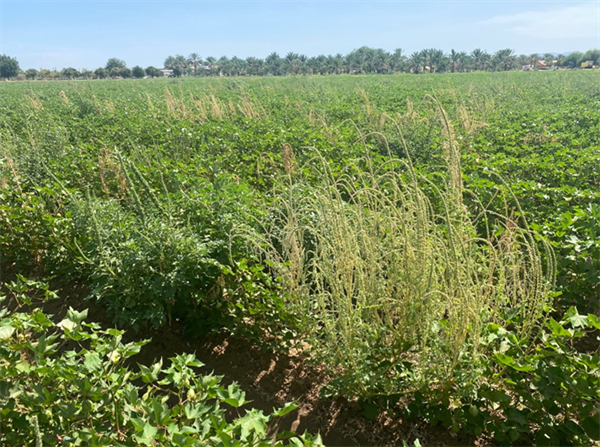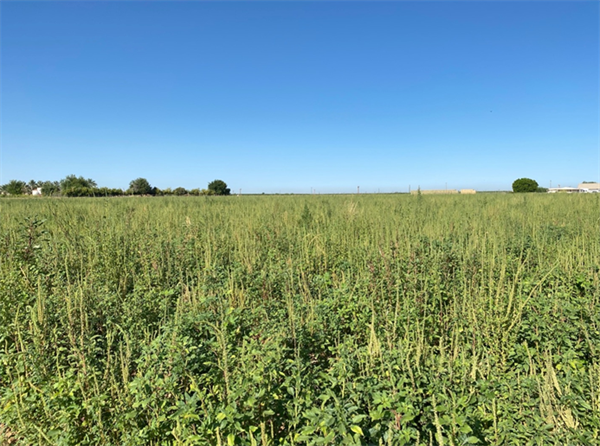What is the difference between resistance to herbicide and tolerance? Sometimes we use the terms inconsistently or interchangeably. For example, some manufacturers of transgenic varieties refer to them as herbicide-tolerant entities and other authors refer to them as resistant-varieties.
The WSSA (1998) helped us define this concept:
Tolerance is the “inherent ability of a species to reproduce and survive after herbicide treatment”. This means no selection or genetic manipulation occurred to create it, the plant is “naturally tolerant”. Some weeds are pulled around to some herbicides due to morphological, physiological, and genetic plant characteristics.
Resistance is the “ability of a plant to survive and reproduce following an exposure to an herbicide dose that is normally lethal to the wild type” of that species1. Resistant weeds appear due to genetic selection by herbicide over a period of time. This usually take several lifecycles.
We are evaluating some fields at the Yuma Mesa in Yuma, AZ for possible Pigweed (Amaranthus palmeri) resistance to glyphosate. In one case after the application of glyphosate we can see dead plants as well as perfectly healthy plants next to each other, which indicates the presence of resistant individuals. In other case plants do not show symptoms of herbicide activity except when applying an extremely high rate (8x) of glyphosate.
It is very important to examine the field history. For instance, if the field is coming from citrus and only glyphosate was used frequently it is possible you inherited the problem of weed resistance. Will continue with our evaluations and keep you informed of our findings.

Figure 1. Susceptible and Non-Susceptible Pigweed (Amaranthus palmeri) after
glyphosate application.

Figure 2. Pigweed (Amaranthus palmeri) population not showing symptoms
after glyphosate application.
Reference:
- Vijay K. Nandula, Glyphosate Resistance in Crops and Weds, pages 35-38. https://www.google.com/books/edition/Glyphosate_Resistance_in_Crops_and_Weeds/aRGw5VDUdfYC?hl=en&gbpv=1&dq=define+herbicide+resistance&pg=PA35&printsec=frontcover





